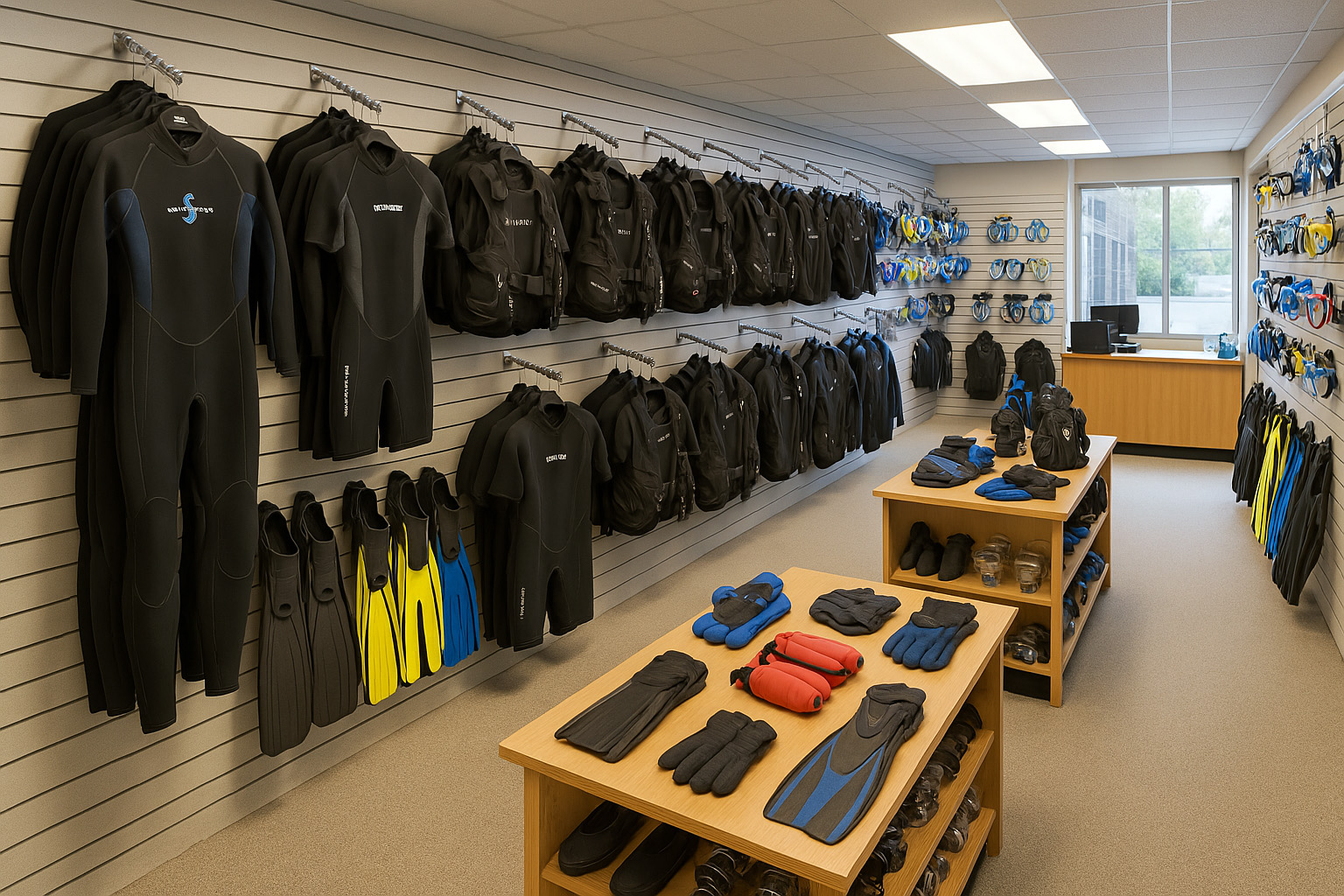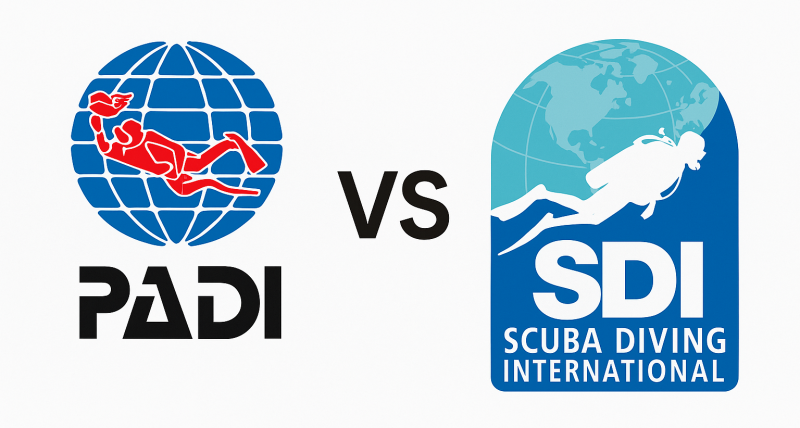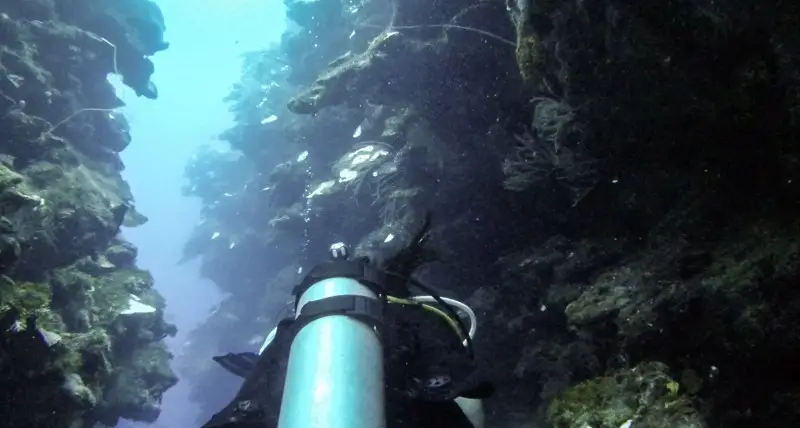You’re excited to get underwater, but the gear wall at the dive shop can feel like a maze. This guide breaks down every essential item, explains why it matters, and shows you how to choose the right option for your diving style, body, and budget. We’ll go deeper than a simple packing list—covering fit, materials, features, and smart upgrade paths—so your first setup serves you well now and grows with you as you gain experience.
Quick note: Your first set of equipment is a starting point, not a final destination. As you log dives, your preferences will evolve. Plan a path that lets you upgrade piece by piece without rebuying everything.
The Core System: Mask, Snorkel, Fins (and Boots)
1) Mask – Clear vision, zero leaks
Why it matters: A leaking or uncomfortable mask can ruin a dive. Comfort and fit outrank brand and price.
How to choose:
Skirt material: 100% silicone for durability and a better seal. Avoid PVC.
Volume: Low-volume masks make equalizing easier and improve field of view for many divers.
Skirt color: Black skirts reduce glare and distractions for photography; clear skirts feel more “open.”
Lenses: Single-pane offers a wide view; dual-pane supports corrective lenses. Tempered glass is a must.
Fit test: Place mask on face without the strap, inhale gently through your nose—if it stays put without air leaks, that’s a good seal. Check for pressure points along cheekbones and between eyes.
What to skip (for now): Fancy coatings and mirrored lenses can help in bright water but don’t fix a poor fit.
2) Snorkel – Useful, but keep it simple
Why it matters: On the surface in chop, a snorkel saves tank gas and effort—especially on long surface swims.
How to choose:
Simple “J” snorkel for reliability and minimal drag.
Semi-dry/dry-top options reduce water entry but add bulk; good if you expect waves.
Attachment: A basic keeper that holds position and doesn’t snag.
3) Fins – Efficient propulsion without leg fatigue
Why it matters: The right fins translate your leg strength into smooth, controlled movement. Poorly matched fins cause cramps and wasted air.
How to choose:
Style:
Paddle/Channel fins = power and control (great for precise kicks and currents).
Split fins = easier on knees/ankles; efficient with smaller, faster kicks.
Foot pocket:
Open-heel (with boots) for most divers—better protection and year-round versatility.
Full-foot for warm-water boat diving and travel; less versatile on rocky entries.
Stiffness: Match to your leg strength and kicking style; over-stiff fins tire you out.
Fit: With boots, your heel strap should sit centered on the heel. No pinching at the toes.
Buoyancy Control: The BCD (Buoyancy Control Device)
Why it matters: Your BCD is the hub of your kit. It supports your tank, stores accessories, holds weights (in many models), and—most importantly—lets you fine-tune buoyancy so you’re neutrally buoyant throughout the dive. Stable buoyancy saves air, protects marine life (no bottom contact), and makes diving remarkably more enjoyable.
BCD types and how to pick:
Jacket-style: Familiar, comfortable at the surface, wraps around the torso. Great for new divers and casual resort diving. For starting out, we recommend the jacket-style BCD.
Back-inflate: Air cell behind you. Offers better trim and horizontal position underwater, but can push you forward at the surface if overinflated. Popular for photographers and divers focused on buoyancy skills.
Backplate & Wing (BP/W): Modular; a metal or composite plate plus a replaceable wing. Extremely adjustable, travel-capable with aluminum or soft plates, and future-proof—you can swap wings for different environments (warm-water single tanks vs. cold-water steel tanks). Excellent long-term system if you plan to dive often.
Travel BCDs: Lightweight, compact materials, fewer D-rings and pockets. Ideal for frequent flyers.
Key features to look for:
Integrated weights (if desired): Easier ditching than belts; ensure secure, intuitive release.
Inflator and dump valves: Smooth operation, reachable in multiple positions. Confirm you can locate/operate them by feel.
Lift capacity: Match to exposure protection and tank choice (thicker suits and steel tanks need more lift).
Fit and adjustability: Shoulder, sternum, and waist adjustments should provide a snug, non-restrictive fit.
Storage: Pockets that open easily with gloves; well-placed D-rings for clips.
Sizing tip: Try a full kit in the shop—BCD + tank + suit—to confirm fit when fully rigged.
Breathing Apparatus: Regulator Set (First Stage, Second Stage, Octo)
Why it matters: Your regulator is life support. You need dependable airflow at various depths and temperatures with minimal work of breathing.
Components:
First stage: Attaches to the tank (DIN or yoke).
Diaphragm vs. piston: Diaphragm designs often handle cold/silty water well; balanced piston models can offer very smooth air delivery.
Environmental sealing: Helps prevent freeze-ups and contamination in cold/dirty conditions.
Primary second stage: The one you breathe from—look for adjustable breathing effort and a venturi switch to reduce free-flows at the surface.
Alternate air source (octopus): Brightly colored, easily accessible. Some setups integrate the octo into the BCD inflator; simple separate octos are straightforward for beginners.
Hoses & ports: Ensure hose routing works with your BCD and body size; enough LP/HP ports for inflator, computer transmitter (if using), and SPG.
DIN vs. yoke:
Yoke is common in North America and Caribbean resorts.
DIN offers a more secure connection and is standard in technical diving; many first stages accept removable yoke adapters.
Service & reliability: Choose brands with local service availability. Annual or biannual service intervals are typical—stay current.
The Brain: Dive Computer (and/or Gauges)
Why it matters: A dive computer tracks depth, time, and no-decompression limits in real time—adjusting for your actual profile, not a theoretical square dive. This improves safety, usability, and post-dive analysis.
What to look for:
Nitrox compatible: Even if you’re not using nitrox yet, you likely will soon.
Algorithm: Common ones are Bühlmann variants (sometimes with gradient factors). Conservative settings are helpful for new divers.
Display:
Segment LCD is simple and long-lasting.
Color screens are easy to read; battery life varies by brightness.
Air integration (optional): Wireless transmitters show cylinder pressure and gas time remaining on your wrist. Nice-to-have, not required.
Compass & logging: Digital compass aids navigation; robust logging helps track skills and improvements.
Batteries: User-replaceable is convenient; USB rechargeable cuts consumables.
Analog backup: Keep an SPG (submersible pressure gauge) even if you use air integration. Many divers also keep a simple bottom timer/compass as redundancy on complex dives.
Exposure Protection: Wetsuits, Drysuits, Hoods, Gloves, Boots
Why it matters: The right exposure suit keeps you warm, reduces fatigue, and extends bottom time safely. Cold stress increases gas consumption and can end dives early.
How to choose a wetsuit:
Thickness guide (approximate):
80–86°F (27–30°C): 1–3 mm or rash guard/shorty
72–79°F (22–26°C): 3 mm full suit
66–71°F (19–21°C): 5 mm full suit + hood optional
60–65°F (16–18°C): 7 mm full suit, hood, gloves
Seams: Glued & blind-stitched (GBS) for cooler water; flatlock is fine for warm water but leaks more.
Fit: Snug but not restrictive; minimal water flushing. Women’s-specific cuts can dramatically improve fit.
Lining: Smooth-skin or thermal linings add warmth and ease donning.
Drysuit (for colder diving):
Materials: Trilaminate (light, dries fast, needs undergarments), neoprene/crushed neoprene (warm and durable, bulkier).
Valves & seals: Latex vs. silicone seals; ring systems allow quick field replacement.
Training: Get a drysuit orientation or specialty—buoyancy control shifts to the suit.
Boots, gloves, hoods:
Boots: Match to your fin pocket; sturdy soles for shore entries.
Gloves: 3–5 mm for temperate water; dexterity vs. warmth is a trade-off.
Hoods: Huge warmth gain with minimal bulk; even a thin hood can extend dive times.
Weights and Weight Systems
Why it matters: Proper weighting is essential for safe ascents, controlled safety stops, and neutral buoyancy.
Options:
Integrated weight pockets (in BCD): Comfortable, easy to ditch. Verify release mechanisms and add trim pockets if needed.
Weight belt: Simple, durable, works with any BCD.
Weight types: Coated lead blocks or soft pouches; soft packs are more comfortable against the body.
Dialing it in: Do a weight check at the end of a dive with 500 psi/35 bar remaining. You should float at eye level with an empty BCD while holding a normal breath.
Signaling, Safety, and Navigation
Why it matters: Good surface signaling and backup tools are small investments with big safety payoffs.
Essentials:
DSMB (delayed surface marker buoy) + spool/reel: Deploy to signal the boat during drift ascents or in busy areas.
Audible/visual signaling: Whistle and small mirror.
Cutting tool: A small line cutter or compact knife for fishing line or kelp.
Lights:
Primary for night/low-viz.
Backup in a pocket for redundancy.
Compass/slate: Simple navigation and note-taking aid. Many computers include a digital compass, but a basic analog compass is helpful.
Cylinders (Tanks)
Why most beginners rent: Tanks are heavy, regulated for transport, and typically included in charter prices. If you shore dive often or live near a fill station, owning a steel cylinder can improve trim and reduce lead requirements; aluminum 80s are common worldwide and easy to rent.
Accessories and “Save-a-Dive” Kit
Why it matters: One small failure can cancel a dive day. A few spares keep you in the water.
Pack these:
Mask strap, fin strap, mouthpiece + zip ties
O-rings (tank and hose sizes), inflator quick-disconnect o-ring
Small tool/mini multi-tool, silicone grease
Spare boltsnaps, bungee/elastic, double-ender
Anti-fog, defog wipes
Renting vs. Buying: Smart Sequencing for Your First Kit
Buy first (highly personal fit and hygiene):
Mask (fit is everything)
Snorkel (simple)
Fins + boots (match to your kicking style and local entries)
Next purchases (core life support and control):
4. Dive computer (learn your own device early)
5. BCD (fit, trim, and buoyancy habits develop around your BCD)
6. Regulator set (choose a model with local service support)
Rent for a while:
Cylinders and weights (situational, heavy to travel)
Exposure suit if you dive infrequently or in varying temperatures—owning a well-fitting wetsuit is still a big comfort upgrade if you dive regularly.
How Your Gear Will Evolve (and How to Plan for It)
Your first configuration won’t be your last—nor should it be. Here’s a realistic progression:
Stage 1 (0–25 dives): Comfort and simplicity. A well-fitting mask, basic snorkel, beginner-friendly fins, jacket or back-inflate BCD, entry-level computer with nitrox, reliable regulator.
Stage 2 (25–75 dives): Fine-tuning trim and buoyancy. You might add a back-inflate or BP/W, experiment with different fin stiffness, and adopt a more streamlined hose routing. You may add features like air integration or a digital compass.
Stage 3 (75+ dives): Specialization. Cold-water drysuit, photography accessories, scooter-friendly fins, specialty wings/plates, redundant computers for complex dives.
Future-proofing tips:
Choose a modular BCD or BP/W so you can swap wings or plates without replacing the whole unit.
Get a regulator with enough ports and easy hose routing to accommodate future add-ons (DSMB, drysuit inflator, transmitter).
Pick a computer with upgradeable firmware or strong manufacturer support.
Fit and Comfort: The Non-Negotiables
Try before you buy: If possible, pool-test or arrange a demo day. A 5-minute try-on in the shop isn’t the same as 45 minutes at depth.
Glove test: Can you operate all clips, buckles, dumps, and the inflator with gloves?
Streamlining check: Nothing should dangle. Use short hoses and boltsnaps; secure your octo, SPG, and DSMB.
Neutral trim practice: In shallow water, confirm you can hover motionless without sculling hands or feet.
Budgeting and Value
Spend where it counts: Mask/fit, computer readability, and BCD/regulator reliability.
Buy once, cry once: A slightly higher upfront cost can be cheaper than replacing poorly chosen gear later.
Service availability: Saving $100 on a regulator that no one local can service is a false economy.
Care, Maintenance, and Storage
Rinse thoroughly in fresh water after every dive—pay special attention to zippers, buckles, inflators, and second stages.
Regulators: Cap and rinse first stage; don’t press purge while submerged (can admit water). Follow service intervals.
Wetsuits: Rinse, turn inside out to dry, then flip. Use wide hangers to avoid shoulder creases.
BCD: Partially fill with fresh water, swish, drain via dump valves, then hang to dry out of sun.
Computers: Rinse and check contacts/charging ports; update firmware periodically.
A Practical Beginner’s Checklist
Personal Fit & Comfort
Mask (tempered glass, silicone skirt, proven fit)
Snorkel (simple keeper)
Fins (open-heel) + Boots (match fin pocket)
Exposure suit (thickness matched to local temps) + Gloves + Hood
Core Life Support
BCD (jacket, back-inflate, or BP/W; proper lift and fit)
Regulator set (balanced first & second stage, octo, appropriate DIN/yoke)
SPG (even if air-integrated)
Dive computer (nitrox-capable, clear display)
Weights & Safety
Integrated weights or belt (trim pockets as needed)
DSMB + spool/reel
Cutting tool (line cutter/compact knife)
Whistle/mirror
Primary light + backup (as appropriate)
Compass/slate (or computer with compass)
Spare & Toolkit
Save-a-Dive kit (straps, o-rings, mouthpiece, zip ties, boltsnaps, silicone grease)
Anti-fog solution
Situational
Travel BCD / lightweight options
Drysuit + training (cold-water expansion path)
Specialty accessories (camera, trays, focus lights) when you’re ready
Bringing It All Together
Start with fit-critical items (mask, fins/boots), then add a computer, BCD, and regulator as you gain momentum. Keep your setup streamlined and comfortable, and don’t be afraid to refine as you learn. With a thoughtful plan, your first kit will grow with you—supporting safe, relaxed, and rewarding dives for years to come.
If you’d like, I can tailor a beginner-to-intermediate gear plan based on where you’ll dive (water temps, shore vs. boat, travel frequency), your body measurements, and your long-term goals—so you invest wisely and avoid re-buying gear later.




